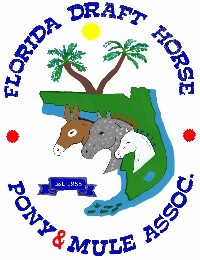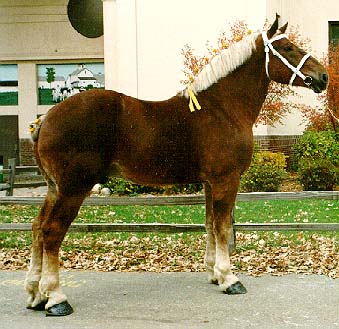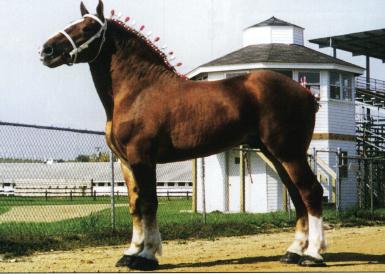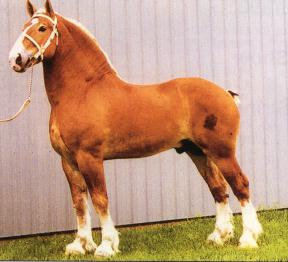

 |
The Belgian originated in the
small country of Belgium, which in spite of its size, has a
considerable variation in topography. The lowlands near the sea
needed a bigger horse for work in their heavier soils and on their
docks than did the wooded upland of the Ardennes. These demands resulted in three different size requirements which the government recognized. The government encouraged the efforts of large and small breeders to fix the types which, through district shows, would be judged. Only those determined to have proper conformation where then eligible for the breeding program. In 1866, the official stud book was established, and the national show in Brussels became the great annual showcase. The result was a rapid improvement as hte draft horses of Belgium came to be regarded as both a national heritage and treasure. The American Belgian is an offshoot of he Brabant horses - the big fellows bred in the lowlands. |
 |
The American Association was
officially founded in February of 1887 in Wabash, Indiana, but it was
slow going in America for the Belgian until an exhibit from the
government of Belgium attracted a lot of attention a the St. Louis
World's Fair in 1903. American farmers took to the Belgian
horse. He was an easy keeper, a willing worker, had an amiable
disposition, and his thickness was desired. |
 |
Today's Belgian is a big,
powerfull fellow that retains the drafty middle, a deep, strong foot, a
lot of bone, heavy muscling and the amiable disposition that the best
of the early Belgians had. The modern Belgian is a great wagon
horse as well as a doughty work horse. The fact that Belgians are equally as effective in pulling competition as in hitch competition says it all. The most common colors are sorrel and blonde sorrel with a white mane and tail. Roans and bays are also common to the breed. |